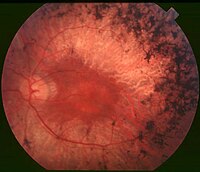
Human iPSC‐derived microglia: A growing toolset to study the brain's innate immune cells
Sign Up to like & getrecommendations! Published in 2020 at "Glia"
DOI: 10.1002/glia.23781
Abstract: Recent advances in the generation of microglia from human induced pluripotent stem cells (iPSCs) have provided exciting new approaches to examine and decipher the biology of microglia. As these techniques continue to evolve to encompass… read more here.
Keywords: microglia growing; toolset; biology; derived microglia ... See more keywords

Generating Human iPSC-Derived Astrocytes with Chemically Defined Medium for In Vitro Disease Modeling.
Sign Up to like & getrecommendations! Published in 2019 at "Methods in molecular biology"
DOI: 10.1007/978-1-4939-9477-9_3
Abstract: To better understand and model neurological, in particular neurodegenerative diseases, human induced pluripotent stem cells (hiPSCs) offer a great source for generation of neural cells. We provide a protocol for the differentiation of hiPSc-derived astrocytes… read more here.
Keywords: vitro disease; derived astrocytes; generating human; human ipsc ... See more keywords

Apolipoprotein E regulates lipid metabolism and α-synuclein pathology in human iPSC-derived cerebral organoids
Sign Up to like & getrecommendations! Published in 2021 at "Acta Neuropathologica"
DOI: 10.1007/s00401-021-02361-9
Abstract: APOE4 is a strong genetic risk factor for Alzheimer’s disease and Dementia with Lewy bodies; however, how its expression impacts pathogenic pathways in a human-relevant system is not clear. Here using human iPSC-derived cerebral organoid… read more here.
Keywords: pathology; cerebral organoids; derived cerebral; ipsc derived ... See more keywords

Human iPSC-derived fallopian tube organoids with BRCA1 mutation recapitulate early-stage carcinogenesis.
Sign Up to like & getrecommendations! Published in 2021 at "Cell reports"
DOI: 10.1016/j.celrep.2021.110146
Abstract: Germline pathogenic mutations in BReast CAncer (BRCA1) genes are thought to drive normal fallopian tube epithelial (FTE) cell transformation to high-grade serous ovarian cancer. No human models capture the sequence of events for disease initiation… read more here.
Keywords: cancer; carcinogenesis; fallopian tube; human ipsc ... See more keywords

Open Chromatin Profiling Identifies Functional Noncoding Risk Variants In Human Ipsc Model of Psychiatric Disorders
Sign Up to like & getrecommendations! Published in 2019 at "European Neuropsychopharmacology"
DOI: 10.1016/j.euroneuro.2017.06.122
Abstract: Abstract Most disease variants lie within poorly-annotated noncoding parts of the genome, and their functional interpretation is challenging. To functionally assess the relevance of noncoding sequences in neuropsychiatric disorders, we hypothesized that disease-relevant noncoding sequences… read more here.
Keywords: risk; noncoding; open chromatin; human ipsc ... See more keywords

Human iPSC application in Alzheimer’s disease and Tau-related neurodegenerative diseases
Sign Up to like & getrecommendations! Published in 2019 at "Neuroscience Letters"
DOI: 10.1016/j.neulet.2019.01.043
Abstract: Alzheimer's disease (AD) is a chronic neurodegenerative disorder characterized by β-amyloid (Aβ) plaques and neurofibrillary tangles with progressive cognitive decline. After years of research with failed clinical trials surrounding Aβ and tau using numerous in… read more here.
Keywords: tau; ipsc application; alzheimer disease; disease ... See more keywords

Characterization of Human iPSC-derived Spinal Motor Neurons by Single-cell RNA Sequencing
Sign Up to like & getrecommendations! Published in 2020 at "Neuroscience"
DOI: 10.1016/j.neuroscience.2020.04.041
Abstract: Human induced pluripotent stem cells (iPSCs) offer the opportunity to generate specific cell types from healthy and diseased individuals, allowing the study of mechanisms of early human development, modelling a variety of human diseases, and… read more here.
Keywords: single cell; motor; ipsc derived; cell ... See more keywords

Generation of a human iPSC line from a patient with retinitis pigmentosa caused by mutation in PRPF8 gene.
Sign Up to like & getrecommendations! Published in 2017 at "Stem cell research"
DOI: 10.1016/j.scr.2017.03.007
Abstract: The human iPSC cell line, RP2-FiPS4F1 (RCPFi001-A), derived from dermal fibroblasts from the patient with retinitis pigmentosa caused by the mutation of the gene PRPF8, was generated by non-integrative reprogramming technology using OCT3/4, SOX2, CMYC… read more here.
Keywords: caused mutation; line; patient retinitis; retinitis pigmentosa ... See more keywords

Generation of a human iPSC line from a patient with congenital glaucoma caused by mutation in CYP1B1 gene.
Sign Up to like & getrecommendations! Published in 2018 at "Stem cell research"
DOI: 10.1016/j.scr.2018.01.004
Abstract: The human iPSC cell line, GLC-FiPS4F1 (ESi047-A), derived from dermal fibroblast from the patient with congenital glaucoma caused by the mutation of the gene CYP1B1, was generated by non-integrative reprogramming technology using OCT3/4, SOX2, CMYC… read more here.
Keywords: caused mutation; line; congenital glaucoma; patient congenital ... See more keywords

Analysis of Transcriptional Variability in a Large Human iPSC Library Reveals Genetic and Non-genetic Determinants of Heterogeneity.
Sign Up to like & getrecommendations! Published in 2017 at "Cell stem cell"
DOI: 10.1016/j.stem.2016.11.005
Abstract: Variability in induced pluripotent stem cell (iPSC) lines remains a concern for disease modeling and regenerative medicine. We have used RNA-sequencing analysis and linear mixed models to examine the sources of gene expression variability in… read more here.
Keywords: non genetic; variability; expression; ipsc lines ... See more keywords

Human iPSC-Derived Neural Progenitors Are an Effective Drug Discovery Model for Neurological mtDNA Disorders.
Sign Up to like & getrecommendations! Published in 2017 at "Cell stem cell"
DOI: 10.1016/j.stem.2016.12.013
Abstract: Mitochondrial DNA (mtDNA) mutations frequently cause neurological diseases. Modeling of these defects has been difficult because of the challenges associated with engineering mtDNA. We show here that neural progenitor cells (NPCs) derived from human induced… read more here.
Keywords: mtdna; drug; model; mtdna disorders ... See more keywords